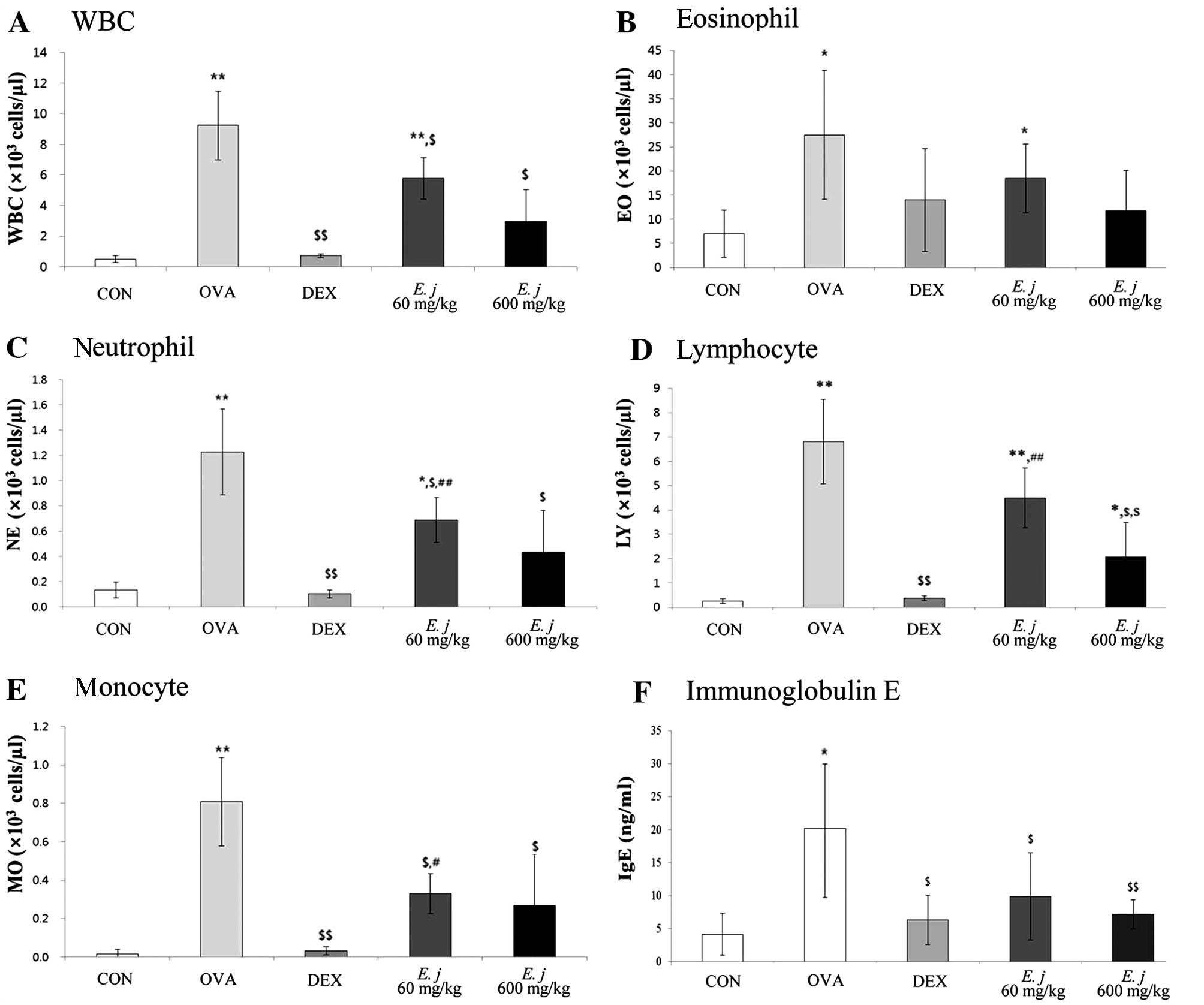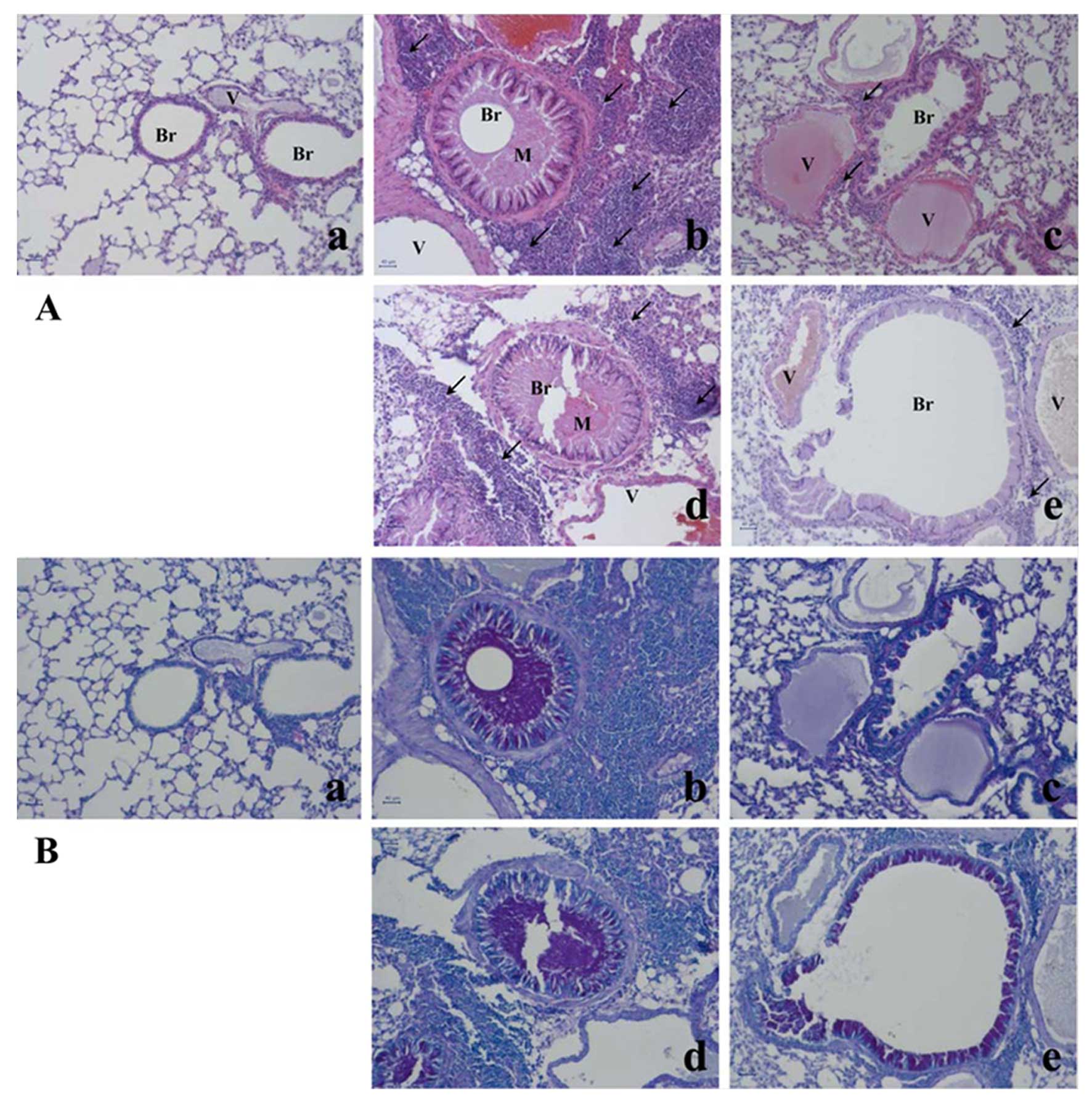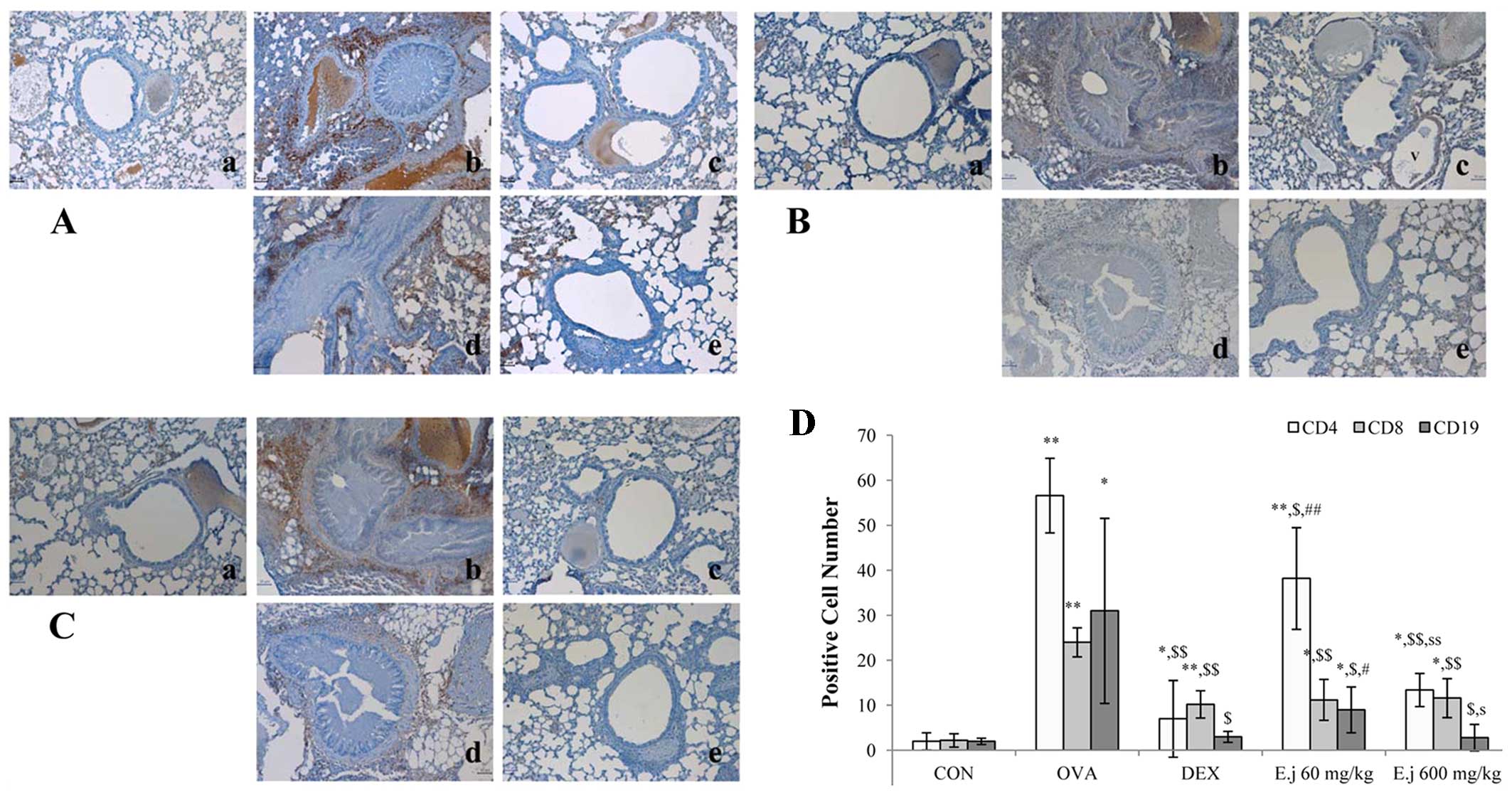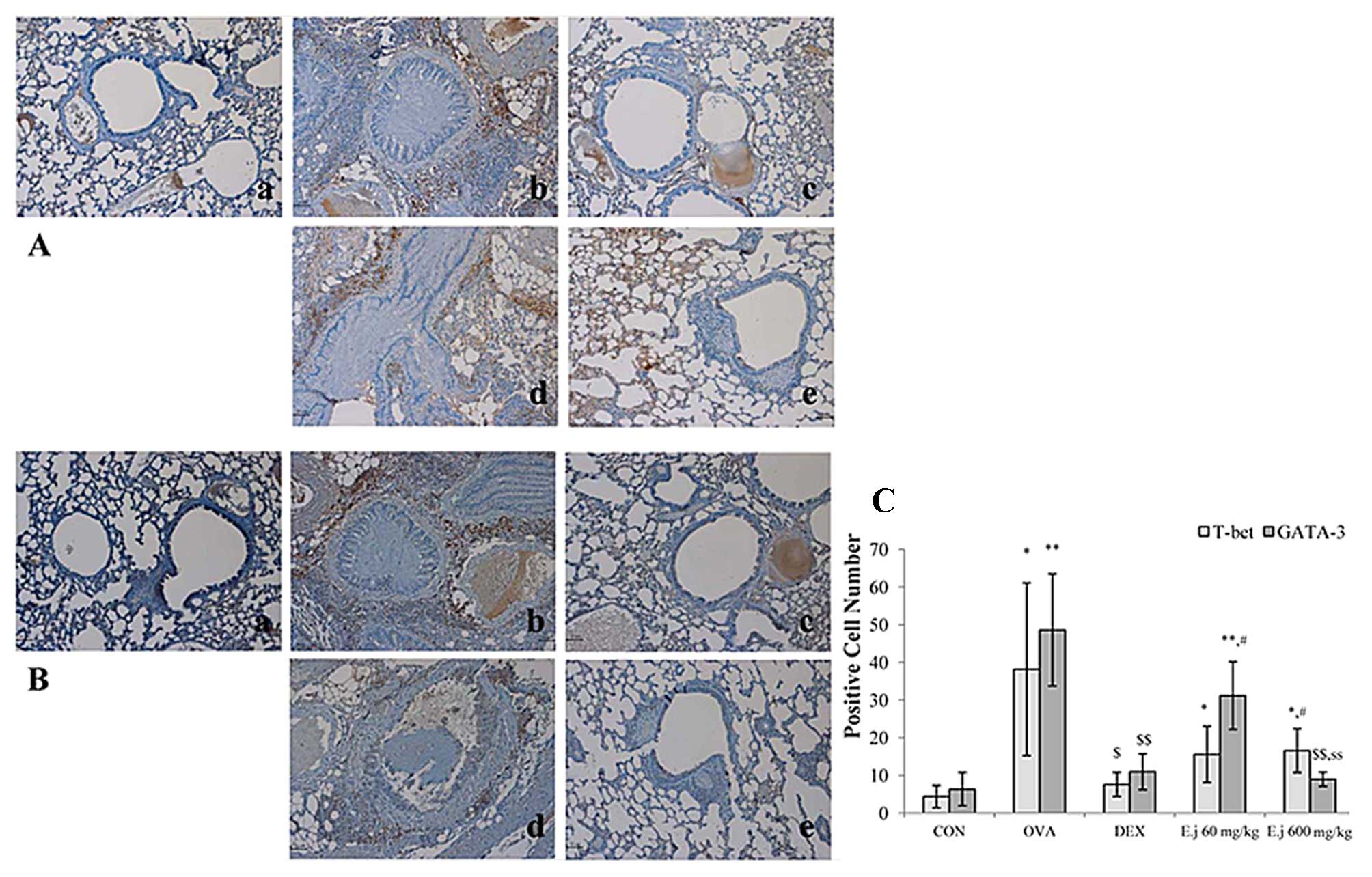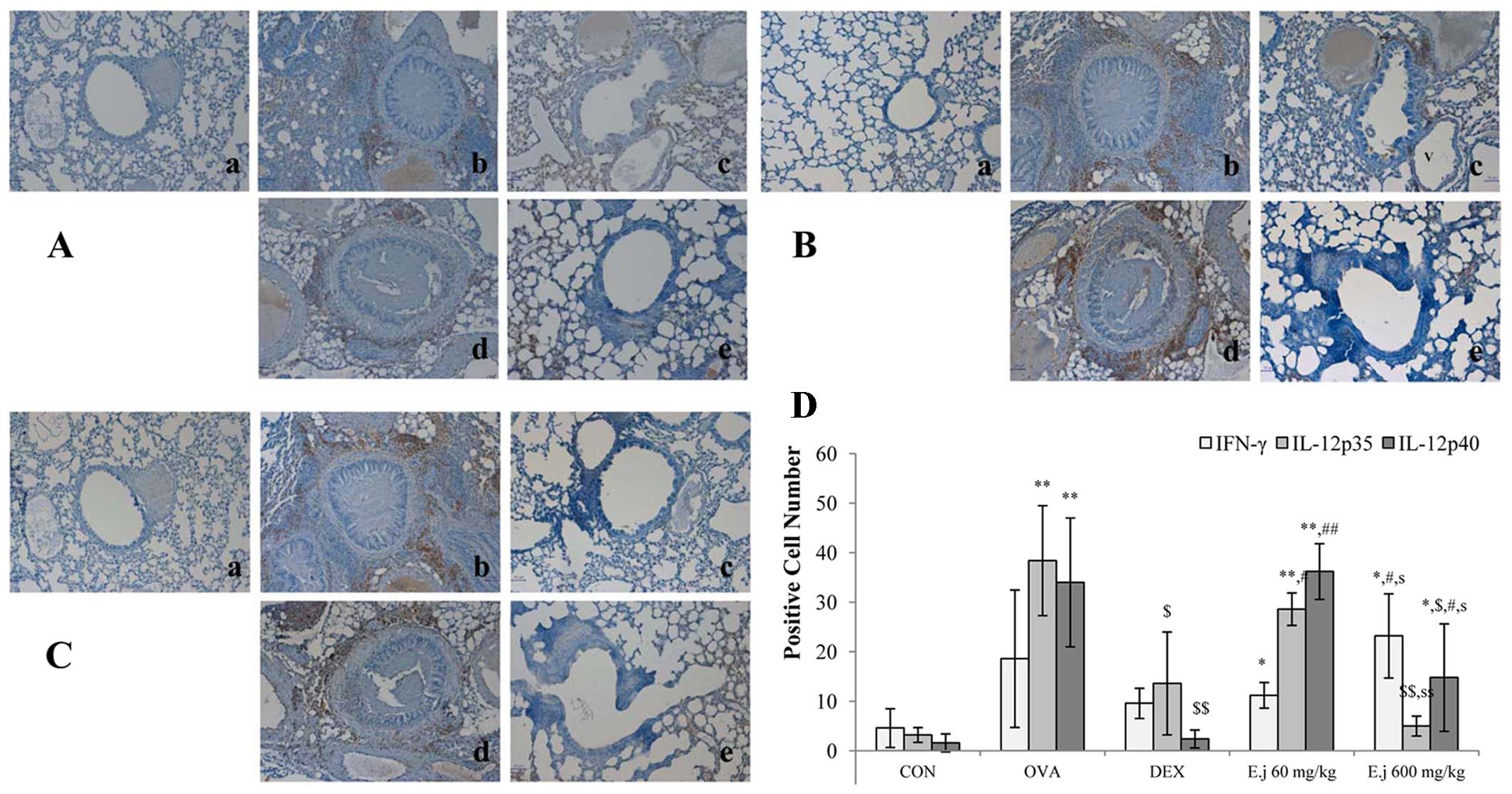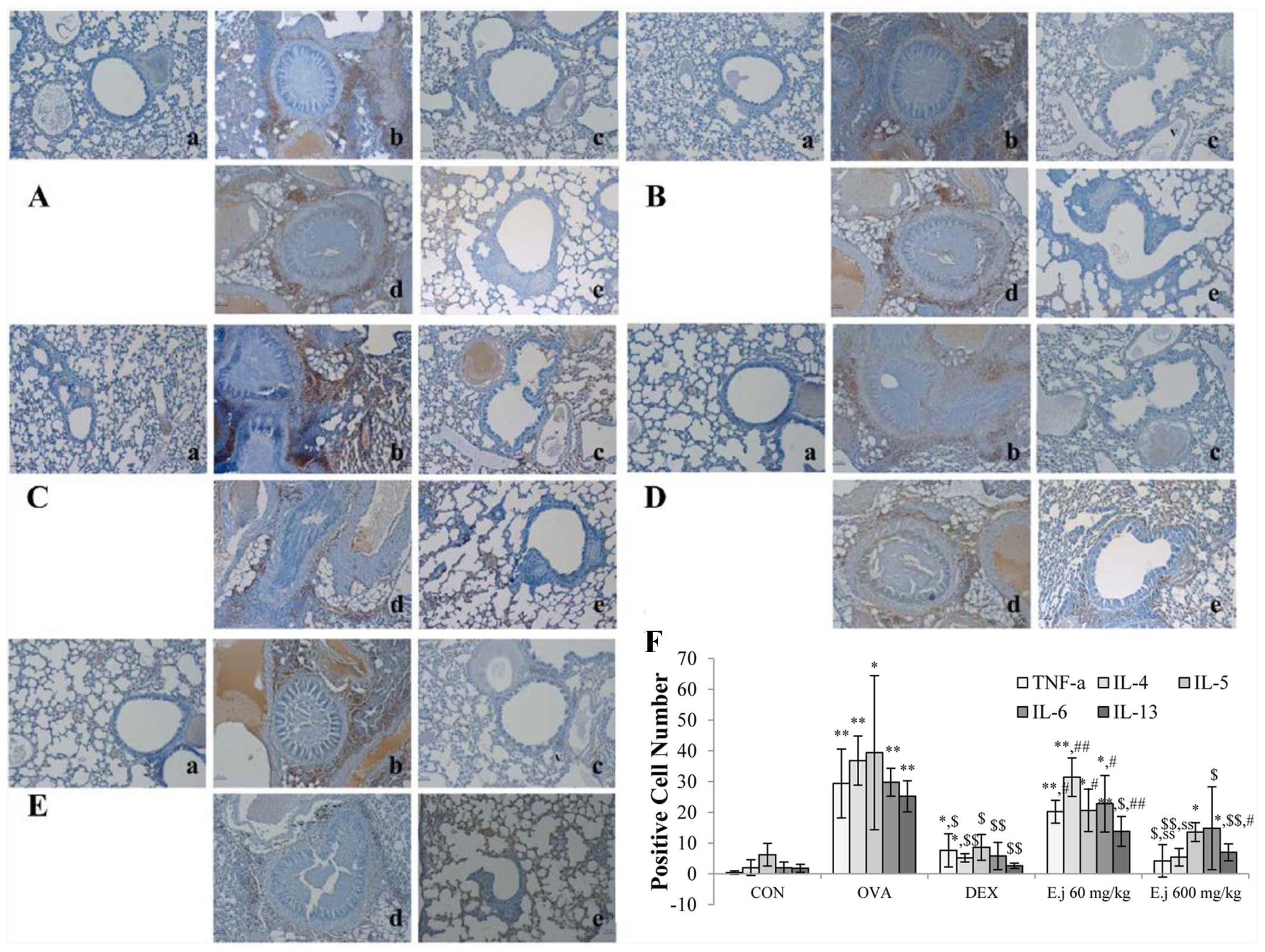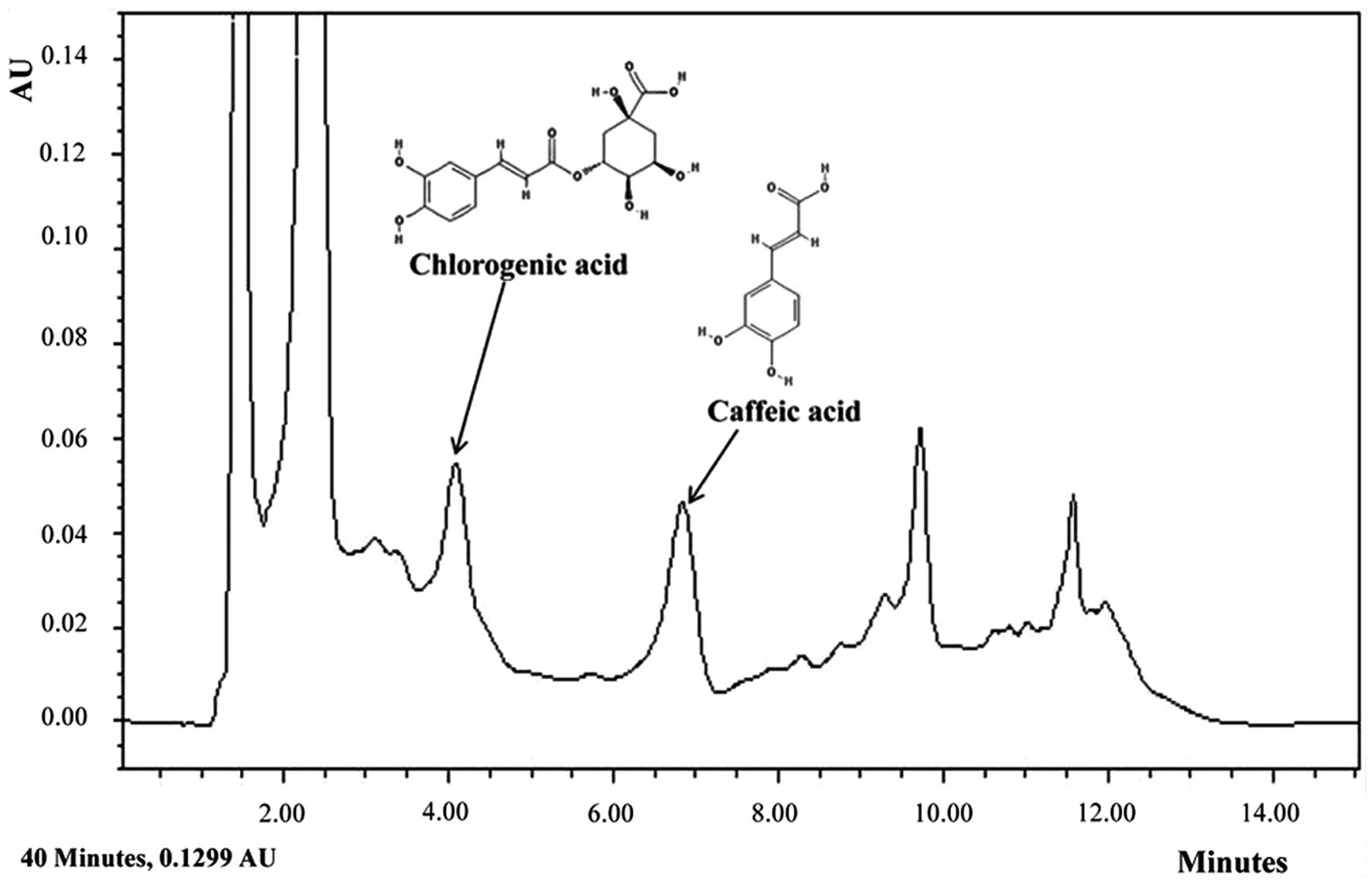|
1
|
World Health Organization: Asthma Fact
Sheet No307. November. 2013
|
|
2
|
United States Environmental Protection
Agency (EPA): Asthma Facts EPA-402-F-04-019. March. 2013
|
|
3
|
Slejko JF, Ghushchyan VH, Sucher B, Globe
DR, Lin SL, Globe G and Sullivan PW: Asthma control in the United
States, 2008–2010: indicators of poor asthma control. J Allergy
Clin Immunol. 133:1579–1587. 2014. View Article : Google Scholar
|
|
4
|
Kay AB: Allergy and allergic diseases.
First of two parts. N Engl J Med. 344:30–37. 2001. View Article : Google Scholar : PubMed/NCBI
|
|
5
|
National Asthma Education and Prevention
Program: Expert Panel Report: Guidelines for the Diagnosis and
Management of Asthma Update on Selected Topics - 2002. J Allergy
Clin Immunol. 110(Suppl 5): S141–S219. 2002.
|
|
6
|
Mattes J, Yang M, Mahalingam S, Kuehr J,
Webb DC, Simson L, Hogan SP, Koskinen A, McKenzie AN, Dent LA, et
al: Intrinsic defect in T cell production of interleukin (IL)-13 in
the absence of both IL-5 and eotaxin precludes the development of
eosinophilia and airways hyperreactivity in experimental asthma. J
Exp Med. 195:1433–1444. 2002. View Article : Google Scholar : PubMed/NCBI
|
|
7
|
Manetti R, Parronchi P, Giudizi MG,
Piccinni MP, Maggi E, Trinchieri G and Romagnani S: Natural killer
cell stimulatory factor (interleukin 12 [IL-12]) induces T helper
type 1 (Th1)-specific immune responses and inhibits the development
of IL-4-producing Th cells. J Exp Med. 177:1199–1204. 1993.
View Article : Google Scholar : PubMed/NCBI
|
|
8
|
Szabo SJ, Kim ST, Costa GL, Zhang X,
Fathman CG and Glimcher LH: A novel transcription factor, T-bet,
directs Th1 lineage commitment. Cell. 100:655–669. 2000. View Article : Google Scholar : PubMed/NCBI
|
|
9
|
Zhu J, Jankovic D, Oler AJ, Wei G, Sharma
S, Hu G, Guo L, Yagi R, Yamane H, Punkosdy G, et al: The
transcription factor T-bet is induced by multiple pathways and
prevents an endogenous Th2 cell program during Th1 cell responses.
Immunity. 37:660–673. 2012. View Article : Google Scholar : PubMed/NCBI
|
|
10
|
Brightling CE, Symon FA, Birring SS,
Bradding P, Pavord ID and Wardlaw AJ: TH2 cytokine expression in
bronchoalveolar lavage fluid T lymphocytes and bronchial submucosa
is a feature of asthma and eosinophilic bronchitis. J Allergy Clin
Immunol. 110:899–905. 2002. View Article : Google Scholar : PubMed/NCBI
|
|
11
|
Mosmann TR and Coffman RL: TH1 and TH2
cells: different patterns of lymphokine secretion lead to different
functional properties. Annu Rev Immunol. 7:145–173. 1989.
View Article : Google Scholar : PubMed/NCBI
|
|
12
|
Yagi R, Zhu J and Paul WE: An updated view
on transcription factor GATA3-mediated regulation of Th1 and Th2
cell differentiation. Int Immunol. 23:415–420. 2011. View Article : Google Scholar : PubMed/NCBI
|
|
13
|
Barnes PJ: Immunology of asthma and
chronic obstructive pulmonary disease. Nat Rev Immunol. 8:183–192.
2008. View
Article : Google Scholar : PubMed/NCBI
|
|
14
|
Hershey GK: IL-13 receptors and signaling
pathways: an evolving web. J Allergy Clin Immunol. 111:677–691.
2003. View Article : Google Scholar : PubMed/NCBI
|
|
15
|
Rankin JA, Picarella DE, Geba GP, Temann
UA, Prasad B, DiCosmo B, Tarallo A, Stripp B, Whitsett J and
Flavell RA: Phenotypic and physiologic characterization of
transgenic mice expressing interleukin 4 in the lung: lymphocytic
and eosinophilic inflammation without airway hyperreactivity. Proc
Natl Acad Sci USA. 93:7821–7825. 1996. View Article : Google Scholar : PubMed/NCBI
|
|
16
|
Wills-Karp M, Luyimbazi J, Xu X, Schofield
B, Neben TY, Karp CL and Donaldson DD: Interleukin-13: central
mediator of allergic asthma. Science. 282:2258–2261. 1998.
View Article : Google Scholar : PubMed/NCBI
|
|
17
|
Zhu Z, Homer RJ, Wang Z, Chen Q, Geba GP,
Wang J, Zhang Y and Elias JA: Pulmonary expression of
interleukin-13 causes inflammation, mucus hypersecretion,
subepithelial fibrosis, physiologic abnormalities, and eotaxin
production. J Clin Invest. 103:779–788. 1999. View Article : Google Scholar : PubMed/NCBI
|
|
18
|
Rincon M and Irvin CG: Role of IL-6 in
asthma and other inflammatory pulmonary diseases. Int J Biol Sci.
8:1281–1290. 2012. View Article : Google Scholar : PubMed/NCBI
|
|
19
|
Hamid Q, Shannon J and Martin J:
Physiologic basis of respiratory disease. Cytokines and Chemokines
in Asthma: An Overview. Tulic MK, Fiset PO, Muller Z and Hamid Q:
BC Decker Inc; Hamilton: pp. 453–467. 2005
|
|
20
|
Bosnjak B, Stelzmueller B, Erb KJ and
Epstein MM: Treatment of allergic asthma: modulation of Th2 cells
and their responses. Respir Res. 12:1142011. View Article : Google Scholar : PubMed/NCBI
|
|
21
|
Barnes PJ: Current issues for establishing
inhaled corticosteroids as the antiinflammatory agents of choice in
asthma. J Allergy Clin Immunol. 101:S427–S433. 1998. View Article : Google Scholar : PubMed/NCBI
|
|
22
|
Wise J: Corticosteroids for asthma may
suppress growth in children in first year of treatment, researchers
say. BMJ. 349:g46232014. View Article : Google Scholar : PubMed/NCBI
|
|
23
|
Ciriaco M, Ventrice P, Russo G,
Scicchitano M, Mazzitello G, Scicchitano F and Russo E:
Corticosteroid-related central nervous system side effects. J
Pharmacol Pharmacother. 4(Suppl 1): S94–S98. 2013. View Article : Google Scholar : PubMed/NCBI
|
|
24
|
Kwon Soon-Kyung: Erythronium japonicum.
Yakup: http://www.yakup.com/pharmplus/plus_print.html?nid=3000131250.
Last updated March 19, 2014.
|
|
25
|
Heo BG, Park YS, Chon SU, Lee SY, Cho JY
and Gorinstein S: Antioxidant activity and cytotoxicity of methanol
extracts from aerial parts of Korean salad plants. Biofactors.
30:79–89. 2007. View Article : Google Scholar
|
|
26
|
Boerjan W, Ralph J and Baucher M: Lignin
biosynthesis. Annu Rev Plant Biol. 54:519–546. 2003. View Article : Google Scholar : PubMed/NCBI
|
|
27
|
Koriem KM and Soliman RE: Chlorogenic and
caftaric acids in liver toxicity and oxidative stress induced by
methamphetamine. J Toxicol. 2014:5834942014. View Article : Google Scholar : PubMed/NCBI
|
|
28
|
Revuelta-Iniesta R and Al-Dujaili EA:
Consumption of green coffee reduces blood pressure and body
composition by influencing 11β-HSD1 enzyme activity in healthy
individuals: a pilot crossover study using green and black coffee.
BioMed Res Int. 2014:4827042014. View Article : Google Scholar
|
|
29
|
Kim HR, Lee DM, Lee SH, Seong AR, Gin DW,
Hwang JA and Park JH: Chlorogenic acid suppresses pulmonary
eosinophilia, IgE production, and Th2-type cytokine production in
an ovalbumin-induced allergic asthma: activation of STAT-6 and JNK
is inhibited by chlorogenic acid. Int Immunopharmacol.
10:1242–1248. 2010. View Article : Google Scholar : PubMed/NCBI
|
|
30
|
Sy LB, Yang LK, Chiu CJ and Wu WM: The
immunoregulatory effects of caffeic acid phenethyl ester on the
cytokine secretion of peripheral blood mononuclear cells from
asthmatic children. Pediatr Neonatol. 52:327–331. 2011. View Article : Google Scholar : PubMed/NCBI
|
|
31
|
Larché M, Robinson DS and Kay AB: The role
of T lymphocytes in the pathogenesis of asthma. J Allergy Clin
Immunol. 111:450–463; quiz 464. 2003. View Article : Google Scholar : PubMed/NCBI
|
|
32
|
Seo JW1, Cho SC, Park SJ, Lee EJ, Lee JH,
Han SS, Pyo BS, Park DH and Kim BH: 1′-Acetoxychavicol acetate
isolated from Alpinia galanga ameliorates ovalbumin-induced asthma
in mice. PLosOne. 8:e564472013. View Article : Google Scholar
|
|
33
|
Bang MA, Seo JH, Seo JW, Jo GH, Jung SK,
Yu R, Park DH and Park SJ: Bacillus subtilis KCTC 11782BP-produced
alginate oligosaccharide effectively suppresses asthma via T-helper
cell type 2-related cytokines. PLoS One. 10:e01175242015.
View Article : Google Scholar : PubMed/NCBI
|



